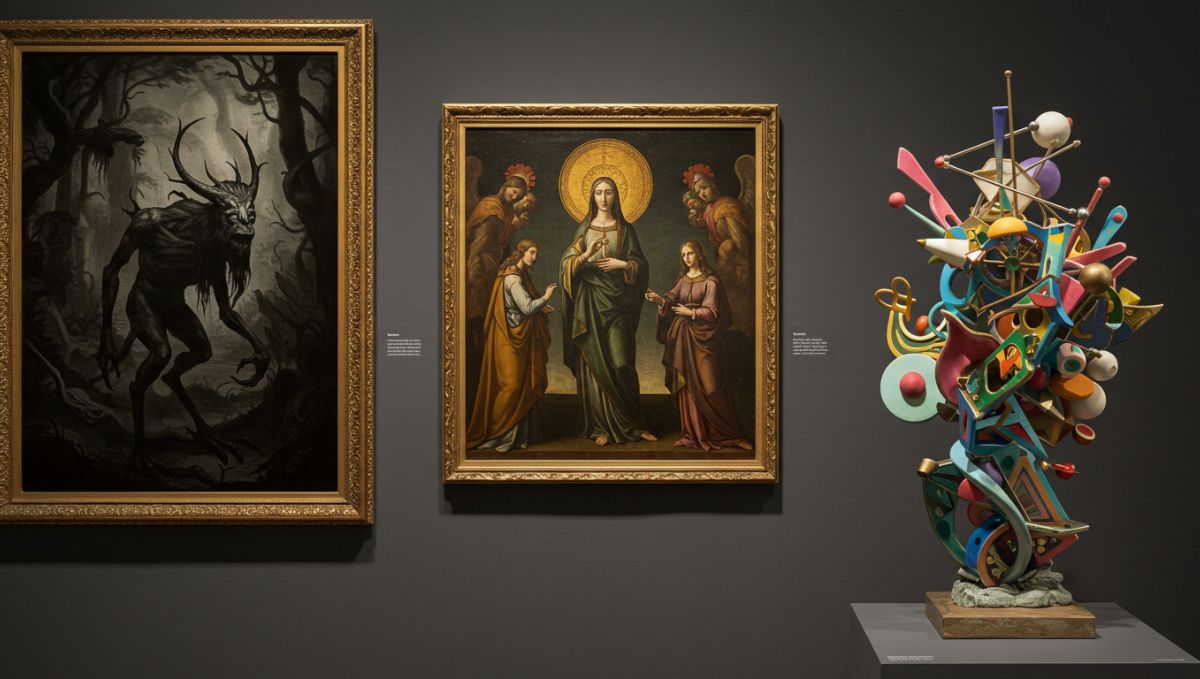In the world of folklore-inspired design and creative expression, some names carry both mystery and artistry. Korpenpelloz is one such term — a fusion of legend, symbolism, and evolving cultural relevance. From its rumored mythological roots to its reinterpretation in modern art and fashion, Korpenpelloz continues to inspire curiosity.
What is Korpenpelloz?
Korpenpelloz is a cultural and artistic motif with origins believed to lie in Northern European and Baltic folklore. While interpretations vary, it is often depicted as a raven-like guardian figure or symbolic pattern used in ceremonial textiles, sculptures, and festival decorations.
The name itself combines korpen (meaning “raven” in several Scandinavian languages) with pelloz — a word whose origins are debated, possibly meaning “cloak” or “veil” in old regional dialects.
Historical Origins of Korpenpelloz
Researchers and historians trace Korpen-pelloz to:
-
Nordic Folktales — Stories of mystical birds guarding treasures or secrets.
-
Pagan Festivals — Decorative motifs symbolizing protection from winter spirits.
-
Heraldry and Clan Symbols — Emblems carved or embroidered into banners.
Its earliest references appear in medieval manuscripts and oral traditions passed down through rural communities.
Symbolism of Korpenpelloz
The Korpen-pelloz motif is rich with layered meanings:
-
The Raven Element — Intelligence, prophecy, and guardianship.
-
The Cloak or Veil Element — Mystery, hidden knowledge, and transformation.
-
Combined Meaning — A guardian of secrets, representing both protection and revelation.
This dual nature makes Korpen-pelloz especially compelling for modern reinterpretation.
Korpenpelloz in Traditional Craft
Historically, Korpenpelloz appeared in:
-
Woven Tapestries — Depicting mythic battles and seasonal changes.
-
Ceremonial Masks — Worn in festivals to embody the guardian spirit.
-
Jewelry — Raven-shaped pendants believed to bring foresight and luck.
These items were often handmade, with each artisan adding unique details while preserving core symbolism.
Korpenpelloz in Modern Art and Design
Contemporary creatives have embraced Korpen-pelloz in:
-
Fashion — Cloaks, scarves, and jewelry featuring the raven motif.
-
Graphic Design — Logos and illustrations for bands, events, or indie brands.
-
Interior Décor — Wall hangings and sculptures inspired by folklore aesthetics.
The blend of ancient mystique with modern minimalism has made Korpenpelloz a favorite in alternative and heritage-inspired art movements.
Cultural Revival and Festivals
In recent years, cultural festivals in parts of Scandinavia, Estonia, and Finland have incorporated Korpenpelloz as part of their heritage programs. These events feature:
-
Live storytelling of old raven legends.
-
Artisan markets selling Korpenpelloz-inspired crafts.
-
Theatrical performances where actors wear symbolic cloaks and masks.
Korpenpelloz in Literature and Media
Authors and filmmakers often use Korpenpelloz to add depth to fictional worlds:
-
As a mythical guardian in fantasy novels.
-
As a mysterious insignia for secret societies in thrillers.
-
As visual symbolism in graphic novels and video games.
This adaptability ensures Korpenpelloz stays relevant in modern storytelling.
Making Your Own Korpenpelloz Artwork
Creating Korpenpelloz-inspired art can be a rewarding creative project:
-
Study the Symbol — Look at historical references for accuracy.
-
Choose a Medium — Fabric, metal, digital art, or wood carving.
-
Incorporate Personal Touches — Add elements that reflect your own story.
-
Balance Tradition and Modernity — Keep the core motif while updating its style.
Korpenpelloz and Spiritual Interpretation
For some, Korpenpelloz holds spiritual meaning:
-
Protection Rituals — Displaying the symbol to guard homes.
-
Meditative Art — Drawing or carving the motif as a mindfulness practice.
-
Seasonal Altars — Using Korpen–pelloz items in winter solstice celebrations.
Preserving the Korpenpelloz Legacy
Cultural preservation groups are working to document and archive Korpen-pelloz-related artifacts. This involves:
-
Photographing historical textiles.
-
Recording oral histories from elders.
-
Hosting workshops on traditional crafting techniques.
Such efforts ensure that Korpen-pelloz remains a living tradition, not just a forgotten emblem.
The Global Influence of Korpen-pelloz
Though rooted in Northern Europe, Korpen-pelloz-inspired art has spread worldwide:
-
Japan — Artists blending it with traditional ink raven paintings.
-
North America — Tattoo culture embracing the symbol’s mystique.
-
Australia — Contemporary jewelry incorporating raven-inspired metalwork.
Future of Korpen-pelloz in Creative Industries
As interest in folklore-based aesthetics grows, Korpen-pelloz is likely to expand into:
-
Gaming — As quest symbols or protective runes.
-
Fashion Collaborations — Between heritage artisans and modern designers.
-
Augmented Reality Art — Bringing the symbol to life through AR exhibitions.
Final Thoughts
Korpenpelloz is more than a decorative motif — it’s a bridge between the mystery of the past and the creativity of the present. Its raven imagery and cloaked symbolism invite endless reinterpretation, making it a timeless source of inspiration for artists, storytellers, and cultural preservationists.
Whether encountered in an ancient tapestry, a modern tattoo studio, or a festival performance, Korpen-pelloz remains a striking emblem of protection, mystery, and artistic evolution.

